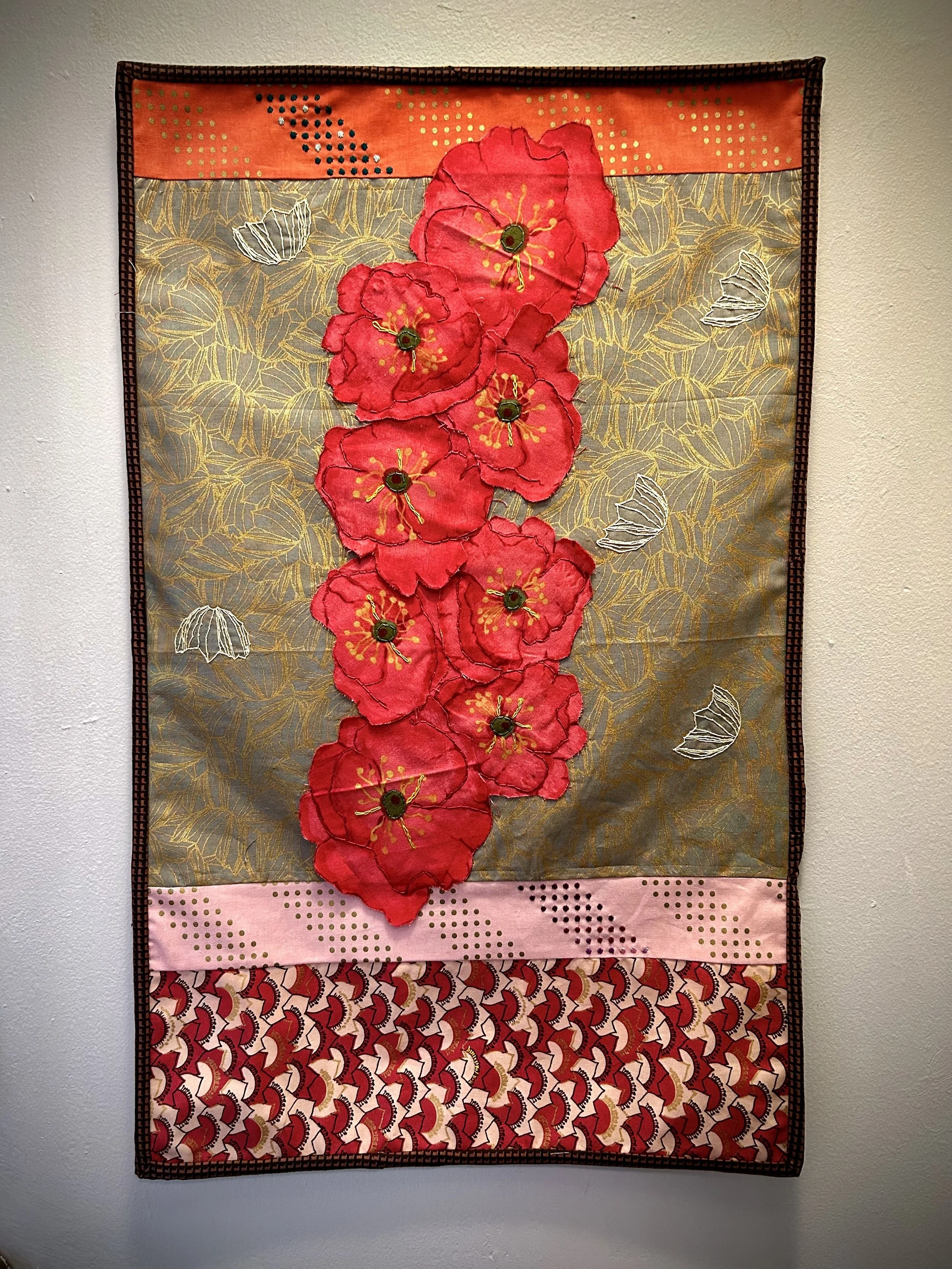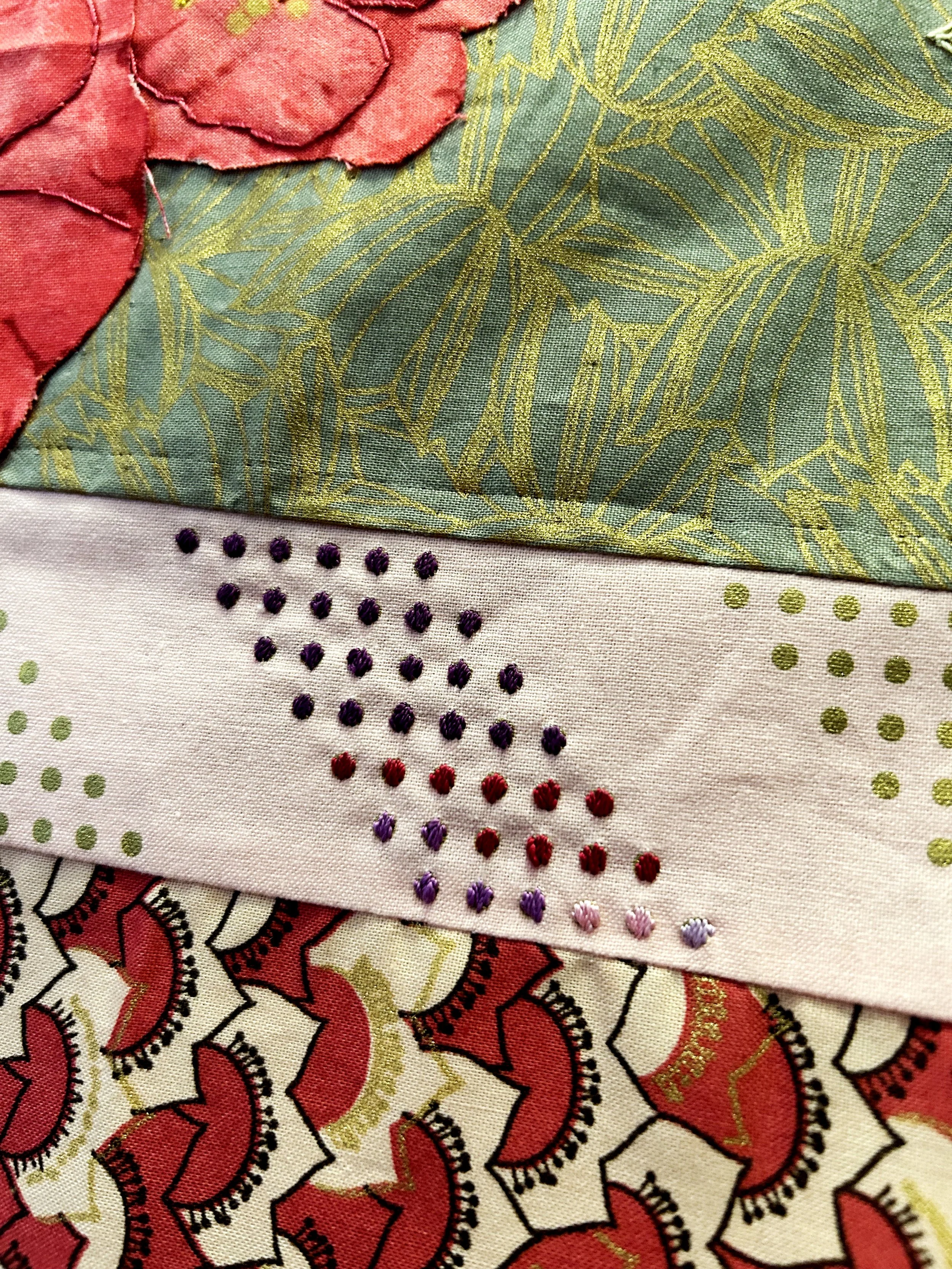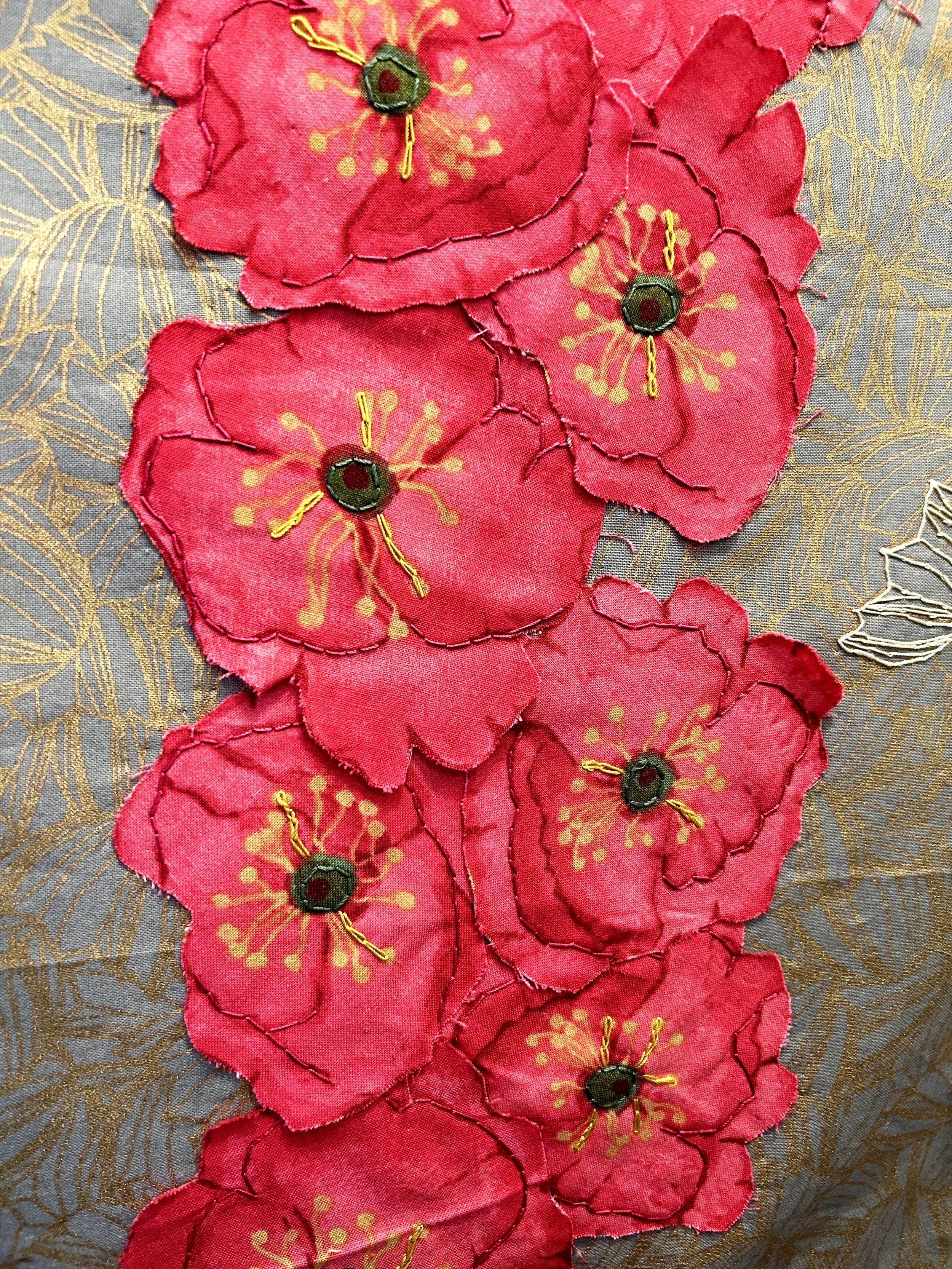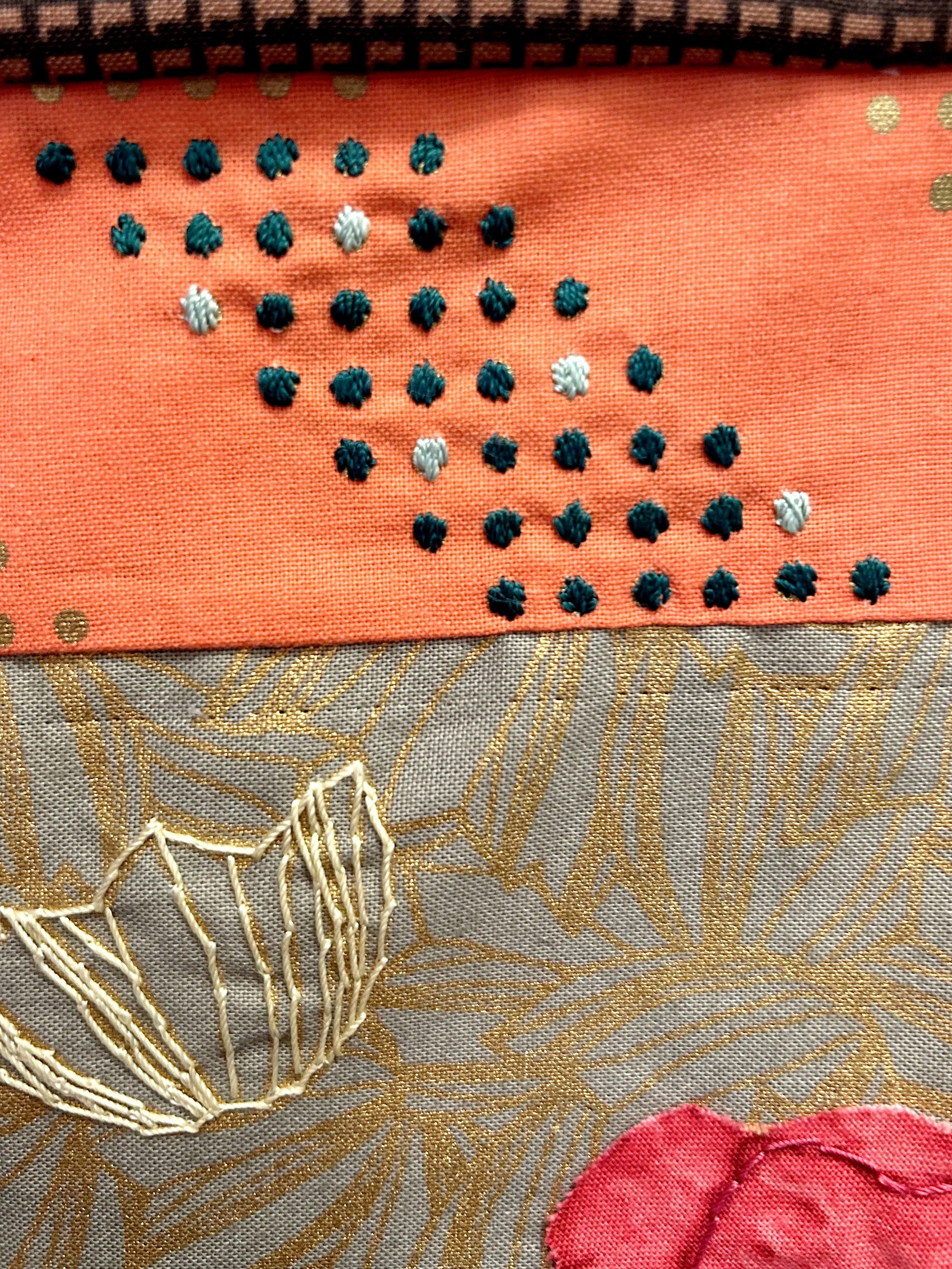Heart Memory
The heart, just like the brain, stores memories. Recent research suggests that specific cells within the heart are responsible for what is now called ‘heart memory,’ which accounts for things our bodies remember, even if we are not consciously aware of the memories. One intriguing side effect of heart transplants is that those who receive a heart routinely report that they can feel the memories of the donor. This can emerge in a variety of ways, including personality changes, new preferences, changes in taste, or changes in emotional register. 90% of heart transplant recipients who have been asked report a noticeable change, or unusual phenomenon, such as unknown memories, since their heart transplant. This piece is a data physicalization that draws on heart transplant data.
Heart transplant data
The data in this piece includes the total number of heart transplants, represented in the background fabric as embroidered flowers (marked as a percentage total of the background pattern). The eight flowers in the center represent the eight regions where transplants happen in the United States, and the number of transplants is represented within the yellow stitching in the center of the flower. There are noticeably more transplants in the southeast vs. the northwest, for example. The green embroidered dots on the upper left represent the age of the person receiving a transplant; the light-colored dots represent pediatric surgeries. The dot pattern on the lower right represents the different races and ethnic groups that receive heart transplants. The data for this piece came from UNOS, the United Network for Organ Sharing.




